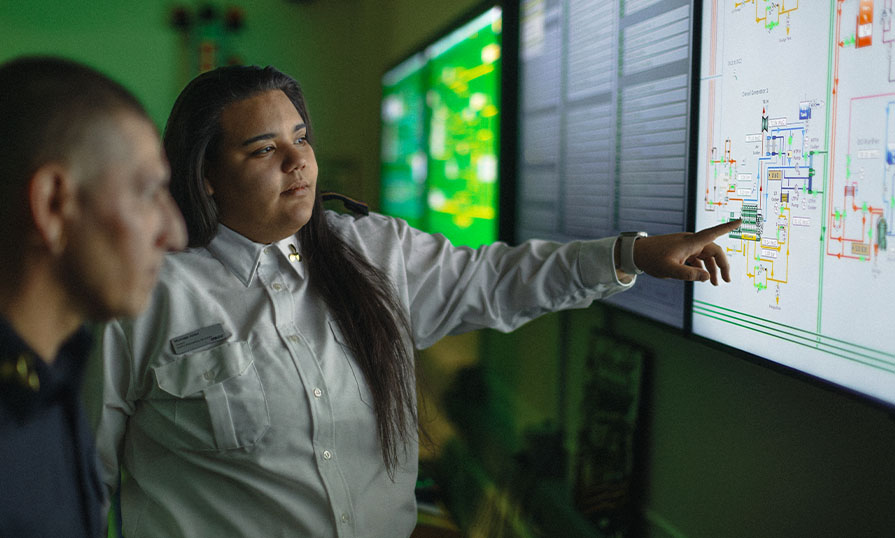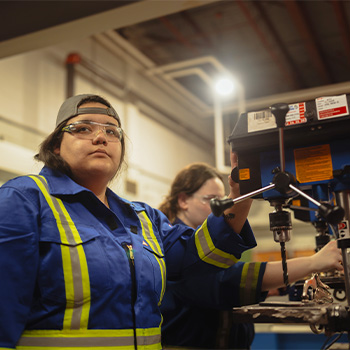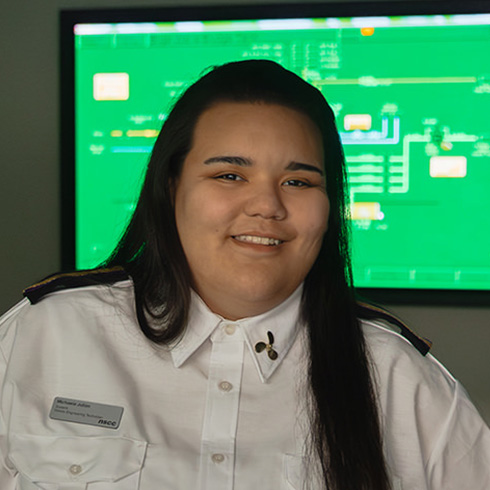Pursuing a passion

Get to know Michaela - Marine Engineering Technology student
Name: Michaela Julian
Program: Marine Engineering Technology, class of 2026
NSCC Campus: Strait Area Campus, Nautical Institute
What does a marine engineer do?
A marine engineer not only maintains and repairs the engine, pumps and auxiliary equipment onboard a vessel, they also do other repairs and maintenance. They fix anything that's broken, whether it’s the main engine, a broken toilet or patching a hole in the wall. In simple terms, a marine engineer takes care of the heart of the ship.

What do you learn in the program?
As a student in the Marine Engineering Technology program, we learn about why things move in a certain way. We learn about physics, heat exchange and temperatures because temperature affects a lot of equipment on board a vessel.
We learn how to weld and do engine and pump overhauls where we strip them down to individual pieces so we can get a sense of taking something apart and putting it back together to work correctly.
How did you decide to pursue marine engineering technology?
In 2018 after graduating high school, I went to university and completed one semester. I wasn’t enjoying it, so I took a gap year. I started at NSCC in 2020 taking Academic and Career Connections (an upgrading program) to upgrade my chemistry and pre-calculus.
I decided that I wanted to pursue a trade and was passionate about working on engines. I took Diesel Repair – Industrial and Marine at NSCC Lunenburg Campus. After finishing that course, I decided to return to NSCC to upgrade my Diesel Repair certificate to a Marine Engineering Technology certificate.
Are there any new technologies or pieces of equipment that you find really interesting?
The simulators are pretty cool. Students can learn what it’s like to work on a vessel and make mistakes without causing a catastrophic failure. Students can practice in the control room and adjust certain things, like opening and closing valves, to prepare for entering or leaving port, for example.
Ocean Dream Award - Funding for Indigenous Peoples and Women
"I receive funding through the Ocean Dream Award which covers 90 percent of the cost of my tuition. Because I’m Indigenous, I also receive a living allowance."
What do you like most about the program?
My favorite part of the program is the onboard experience where you get to go on board an actual ship and see first-hand what a marine engineer does.
My first onboard experience was with Clearwater where I was on a vessel for 16 days at a time. It was an overall great experience. I really enjoyed being around the crew and getting to know them.
What has been your most memorable experience?
One of my most memorable experiences was the day I was on board a vessel and saw a tuna for the first time! I’m interested in marine life so I thought that was pretty cool.

Our faculty is very supportive and always willing to explain things as much as needed. There are lots of options for tutoring, and third- and fourth-year students are always open to help because they want you to succeed the same way they did.
Where do you hope to work when you’re finished your program?
Once I have my Marine Engineering Technology certificate, I would like to return to my home Mi’kmaq community and work on a fishing fleet.
What advice would you give a student who is getting ready for an onboarding experience?
Staying positive is a big thing because you want to help keep the morale up. I would also encourage students to ask lots of questions - the engineers like it when students are engaged and show interest in learning more about what they’re doing.
